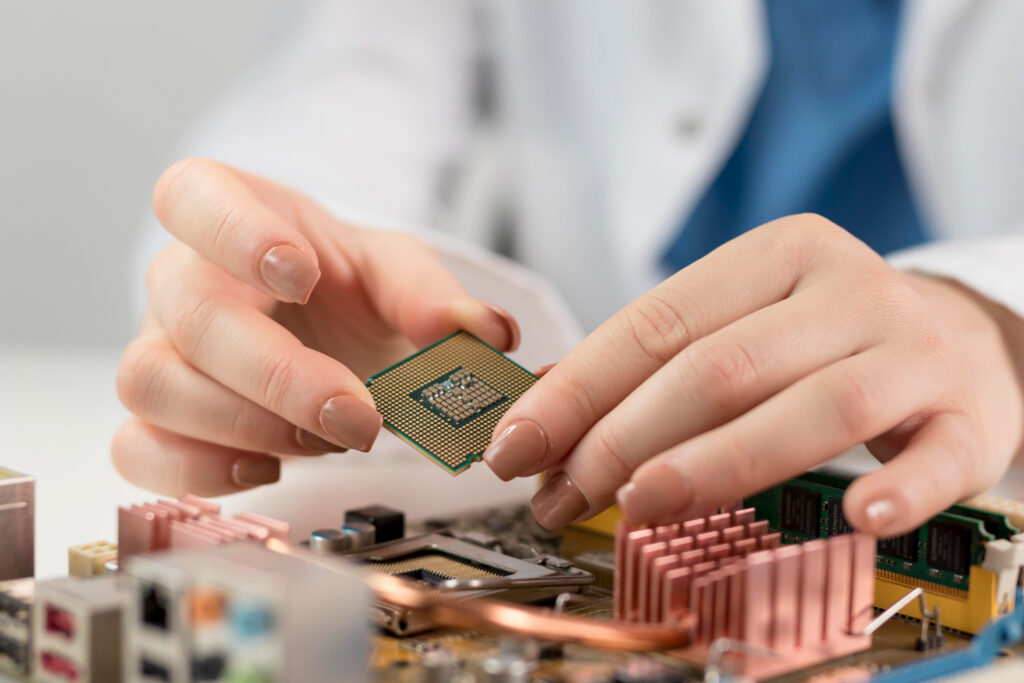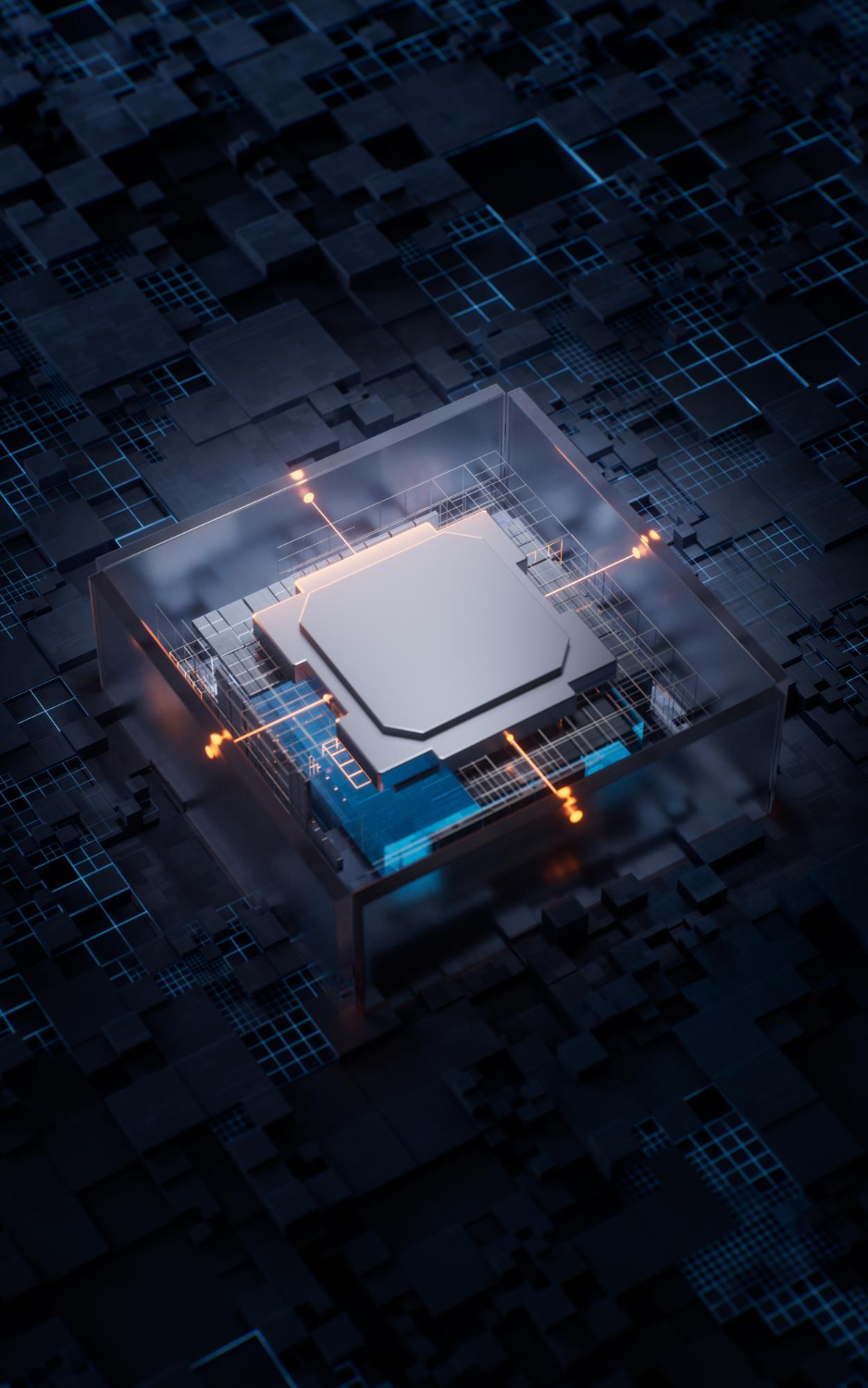India has taken a historic leap in its semiconductor journey with the unveiling of the Vikram 32-bit microprocessor at Semicon India 2025. The processor, developed indigenously by the Vikram Sarabhai Space Centre (VSSC) and the Semiconductor Laboratory (SCL) in Chandigarh, is not just a technological breakthrough but also a statement of India’s ambition to become a global semiconductor powerhouse.
For decades, India has been a global hub for chip design, but domestic manufacturing has remained limited. With Vikram-32, India showcases its ability to design, fabricate, and test advanced processors, marking a shift towards true self-reliance in high-end technology.
The Story Behind Vikram-32

The Vikram-32 is a natural successor to the Vikram-1601, a 16-bit processor. Designed specifically for launch vehicle avionics and other space applications, this microprocessor was created to withstand the harshest conditions of space.
Its development was a collaborative effort between ISRO’s VSSC and SCL. The fabrication took place in India’s own semiconductor foundry, making it a fully indigenous product. This achievement underscores the progress of the India Semiconductor Mission (ISM), launched to reduce dependency on global suppliers.
Technical Features of Vikram-32
The Vikram-32 is not just symbolic—it is technically robust. Here are its key features:
- Processing Speed: Operates at around 100 MHz, sufficient for space-grade applications.
- Temperature Tolerance: Functions in extreme conditions, ranging from –55°C to +125°C.
- Floating-Point Support: Enables complex mathematical and scientific calculations in real time.
- Programming Support: Compatible with the Ada programming language, widely used in aerospace and defense.
- Fabrication: Manufactured using 180nm CMOS technology at the SCL facility in Chandigarh.
- Validation: Tested and successfully validated during the PSLV-C60 mission, proving its reliability in space.
These features make it a world-class space-grade microprocessor—a domain where only a few countries, such as the US and China, dominate.
Why Vikram-32 Matters for India

The unveiling of Vikram-32 is more than a technological milestone—it’s a strategic achievement. Here’s why:
- Boost to Self-Reliance: India reduces dependence on imported chips for critical missions.
- Strengthening National Security: Indigenous processors limit vulnerabilities in defense and space systems.
- Global Recognition: India joins the elite club of nations with space-grade chip design and fabrication capability.
- Catalyst for Innovation: Inspires domestic startups and industries to explore advanced semiconductor design.
- Foundation for the Future: Sets the stage for next-generation processors in smaller nodes (28nm and below).
Semicon India 2025 – A Platform for Transformation
The Semicon India 2025 conference was themed “Building the Next Semiconductor Powerhouse.” The event showcased India’s semiconductor ecosystem, including:
- Chip Design Leadership: India already contributes 20% of the global semiconductor design workforce.
- Fabrication Push: Ten semiconductor projects have been approved, with five fabrication units under construction across states.
- Global Partnerships: Leading companies from Taiwan, the US, and Europe are collaborating with Indian firms.
- Government Support: The India Semiconductor Mission provides policy, funding, and infrastructure support.
Presenting Vikram-32 at this event was symbolic—it reinforced the idea that India is moving beyond design to become a chip-making nation.
Applications Beyond Space
While the Vikram-32 is designed primarily for rockets and satellites, its potential applications extend far beyond space:
- Defense: Secure, indigenous processors can power radars, missiles, and command systems.
- Automotive: The growing EV sector requires reliable processors for safety and performance.
- Energy: Power grids and nuclear plants need robust processors for safe operations.
- Industrial Automation: Factories moving toward Industry 4.0 can benefit from rugged chip designs.
This makes Vikram-32 not just a space technology but a multi-sector innovation enabler.
Challenges Ahead
While Vikram-32 is a remarkable breakthrough, India’s semiconductor journey is not without challenges:
- Advanced Node Gap: Current fabrication at 180nm lags behind global leaders producing at 7nm and below.
- Supply Chain Dependencies: India still imports critical raw materials and tools.
- Skilled Workforce Shortage: Manufacturing talent is limited compared to design talent.
- High Investment Needs: Semiconductor fabs require billions of dollars in long-term investment.
Overcoming these barriers will be crucial if India wants to compete with countries like the US, Taiwan, South Korea, and China.
Looking Ahead – India’s Semiconductor Future
The Vikram-32 microprocessor is just the beginning. With continued investment, policy support, and industry collaboration, India can:
- Develop next-generation processors at smaller nodes.
- Establish itself as a trusted global semiconductor supplier.
- Use indigenous chips in consumer electronics, defense, and industrial sectors.
- Strengthen its position as a geopolitical player in the chip supply chain.
Conclusion
The Vikram 32-bit microprocessor, launched at Semicon India 2025, is more than a technological marvel—it’s a symbol of India’s resolve to achieve self-reliance in critical technologies.
From its robust space-grade design to its broader industrial potential, Vikram-32 reflects India’s ability to innovate at the highest levels. As the global semiconductor race intensifies, this breakthrough positions India as a serious contender, not just in design but also in indigenous chip fabrication.
The journey is long, with challenges ahead, but Vikram-32 proves one thing clearly: India is ready to take its place among the world’s semiconductor leaders.

